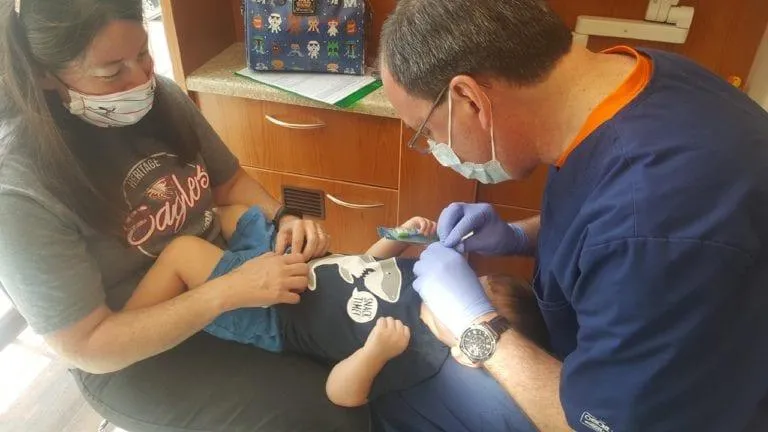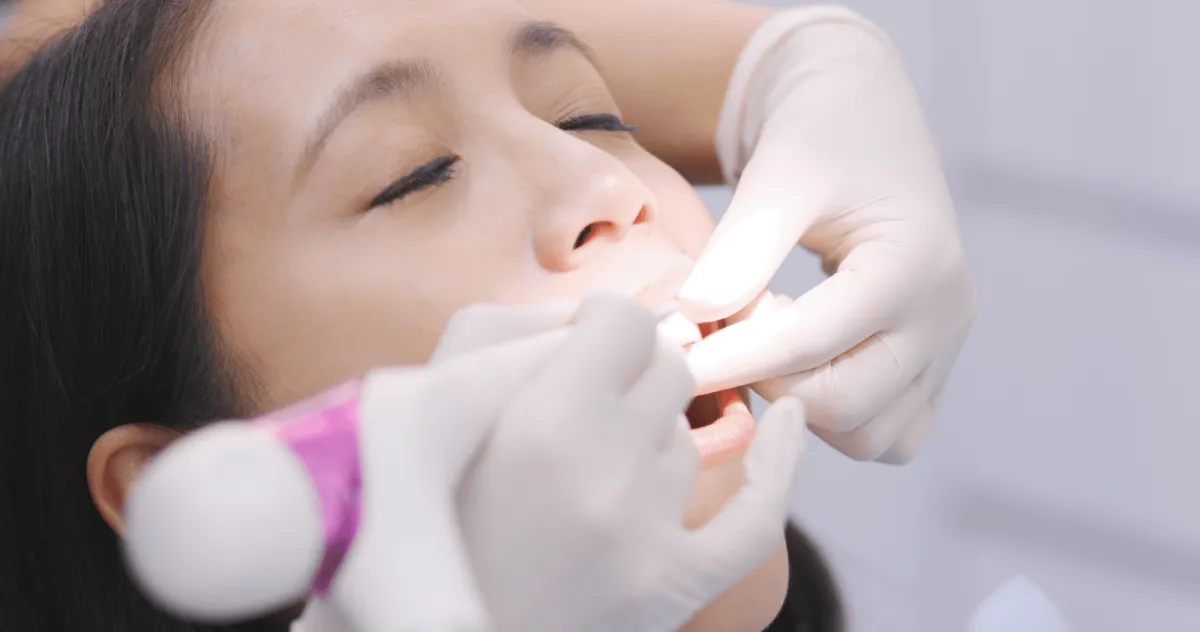WELCOME TO
HURST PEDIATRIC DENTISTRY!
Here at the pediatric dental office of Dr. Joby Hurst, we take pride in offering our young patients the highest quality of dental care in a kid-friendly environment. We are conveniently located in Birmingham, Alabama and are experienced in providing routine dental care for infants, children, teens and patients with special needs.
Dr. Hurst and his team of friendly professionals work together to provide a positive dental experience that will make your child smile! We promise to work with you and your child personally and create a customized treatment plan to meet your individual needs and desires.
Office tour
Early Dental Care
We believe early dental care can promote a lifetime of healthy smiles for your child. We offer a full range of services from routine dental exams and cleanings to fillings, sealants and fluoride treatments that will help ensure that your child grows up with a healthy smile.
Sedation Dentistry
We recognize that for some of our patients, a visit to the dentist makes them a bit nervous.
We offer nitrous oxide sedation for our more apprehensive patients, so they can relax while receiving the dental care that they need.
For those requiring more intensive treatment, Dr. Hurst offers in office anesthesia using Dr. Jeff Plagenhoef.
Dr. Jeff is a board-certified pediatric anesthesiologist with Pediatric Dental Anesthesia Associates.
We appreciate your interest in our practice and encourage you to continue exploring our website to learn more about us. Feel free to contact us to schedule an appointment with Dr. Joby Hurst today!

Blogs and Resources

Sedation Options for Pediatric Dentistry
Some call it sedation dentistry. Others call it sleep dentistry. No matter what you call it, no dentist wants to use sedation on their patients, if possible. But, in some cases such as when a child is too young or is unable to cooperate, it may become necessary to utilize sedation to get through the dental procedure.
Options for patients with anxiety or inability to cooperate due to age, health conditions, or special needs include the following types of sedation:
Laughing Gas sedation (Nitrous oxide)
Oral sedation
General anesthesia
Deep sedation
Nitrous oxide sedation in pediatric dentistry is often called ‘Laughing Gas.’ Nitrous oxide is a gas mixed with oxygen that the patient breathes in causing a lightheaded or tingly feeling. Some kids describe a floating feeling they get that makes them giggle.
The benefit of laughing gas is that it allows the patient to relax without actually going to sleep. It is a great option for patients who are cooperative but just have anxiety over the procedure. It wears off quickly after the gas is turned off and is safe, with few side effects.
It is a good patient management tool for relatively short procedures. More sedation may be needed if the dental work is extensive with a long, drawn-out, procedure time.

Oral sedation pros and cons
Oral sedation, a widely used approach in pediatric dentistry, serves as a valuable tool to help children relax during dental procedures. This method considered a mild to moderate level of sedation, induces a state of relaxation and slight drowsiness in the child without fully rendering them unconscious. The convenience of oral sedation lies in the absence of invasive measures like IVs or breathing tubes, eliminating the need for an anesthesiologist to be present during the procedure. Dentists can administer the sedation medication themselves and monitor the child throughout the process, making it a beneficial tool in patient management.
However, as with any medical intervention, dentists must weigh the advantages against the potential drawbacks of oral sedation. While it proves effective for most children, the results of sedation can be unpredictable in small children, thus requiring attention and monitoring. Additionally, the possibility of needing additional local anesthesia to control the child's pain raises concerns of overmedication. Lastly, the cooperation of the child in taking the medication may present challenges in certain cases.
We aim to provide a comprehensive analysis of the pros and cons of oral sedation, equipping dentists and parents with the necessary information to make informed decisions regarding sedation options for dental procedures. By understanding the potential benefits and drawbacks of oral sedation, dental professionals can optimize patient care and ensure a safe and comfortable experience for children.
Oral Sedation: Pros
Considered a mild to moderate level of sedation
Helps children relax and become slightly sleepy
Children can be easily awoken if they fall asleep
No need for IVs or breathing tubes
The dentist can administer medications and monitor the child, eliminating the need for an anesthesiologist
Beneficial tool in patient management
Oral Sedation: Cons
Results can be unpredictable in small children
Additional local anesthetic may be needed to control pain, increasing the risk of overmedication
The child may not be cooperative when taking the medication

General anesthesia is most often administered in a hospital setting
For general anesthesia, your child will either be in a specially-equipped dental office, an ambulatory surgical center, or most often, in a hospital. Your child will be attended by specially-trained professionals, either physicians, dentists, or certified nurse anesthetists, who will monitor your child during the procedure.
During a procedure with general anesthesia, your child will be completely asleep and will not feel any pain. Upon waking after the procedure, they will not have a memory of it.
General anesthesia is a good option when a lot of dental work needs to be done and multiple visits to the dentist's office would be required to complete the procedure. It is also best for special needs patients or patients with significant health issues because the work is done in a controlled setting with highly-trained personnel.
Usually, there is little to no local anesthetic required, but the procedure can end up being expensive.
Deep sedation in the dental office with a trained pediatric anesthesiologist
Deep sedation is a type of anesthesia that is administered intravenously (through the veins). It is different from general anesthesia in that it usually doesn’t require a breathing tube. This type of sedation puts patients into a state of near unconsciousness where most pain is blocked.
Deep sedation is becoming a more popular option because a trip to the hospital is avoided. This treatment can be performed safely in the dental office setting, with little or no local anesthetic needed. It can also be more cost-effective. A pediatric anesthesiologist will be the one administering the sedation medication and monitoring the patient so overmedicating is avoided.
What’s the difference between deep sedation and general anesthesia?
According to Crest’s DentalCare.com, both deep sedation and general anesthesia are drug-induced loss of consciousness. In deep sedation, the patient cannot be easily aroused but will respond after repeated stimulation. Whereas, in general anesthesia, the patient cannot be aroused. Under general anesthetic, the use of positive pressure ventilation is necessary to maintain the airway.
What’s the best sedation method for my child?
Be sure to discuss your child’s medical history and any medications they are taking with your child’s dentist. Also, make sure that your pediatric dental provider is trained in and familiar with the procedure before undergoing any treatment.
Pediatric dentists are knowledgeable about choosing the best method of sedation for each case and will be able to answer your questions regarding what’s best for your particular child. Overall, the methods above are both commonly used and considered safe and effective.
The American Academy of Pediatric Dentistry website has helpful information to learn more about sedation options and guidelines. You can also go to the Pediatric Dental Anesthesia Associates (PDAA) website to get more information.
Conclusion
We hope this provides some good information and useful knowledge for parents whose child needs sedation for pediatric dental procedures. If you have any questions, please contact Dr. Joby Hurst at (205) 969-7454.

19 INVERNESS CENTER PARKWAY, STE 250, BIRMINGHAM, AL 35242
TEL: 205.969.7454
E-MAIL: [email protected]
2018 © ALL RIGHTS RESERVED | PRIVACY POLICY | TERMS AND CONDITIONS
Site by Trustway Marketing Powered by Kyrios Systems